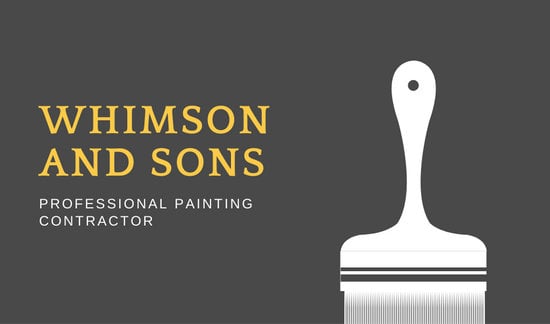Important Seasonal Aspects Of Commercial Exterior Paint: What You Must Comprehend
Important Seasonal Aspects Of Commercial Exterior Paint: What You Must Comprehend
Blog Article
Post Composed By-Regan Skafte
When you're planning an industrial external painting task, seasonal elements can make or damage your outcomes. https://small-job-painters-near-m39493.blogitright.com/34484645/boost-your-home-s-curb-allure-the-benefits-of-hiring-expert-residence-painters 'll wish to take into consideration just how temperature level and moisture impact paint application and drying out times. Selecting the appropriate season can guarantee your paint adheres effectively and lasts much longer. But which seasons are absolutely the best for this kind of job? Allow's check out the key elements that can impact your task's success.
The Influence of Temperature Level on Paint Application
When you're preparing a business exterior paint task, the temperature can dramatically affect exactly how well the paint sticks and dries out.
Ideally, you want to repaint when temperatures range in between 50 ° F and 85 ° F. If https://www.instagram.com/p/CpQP527umsG/?utm_source=ig_web_copy_link 's also cool, the paint might not cure effectively, leading to problems like peeling off or fracturing.
On the other hand, if it's too warm, the paint can dry out as well quickly, avoiding appropriate attachment and resulting in an uneven surface.
You should also consider the time of day; morning or late afternoon uses cooler temperatures, which can be a lot more beneficial.
Always inspect the maker's suggestions for the particular paint you're utilizing, as they usually offer guidance on the perfect temperature array for ideal results.
Humidity and Its Result on Drying Times
Temperature level isn't the only environmental aspect that influences your commercial outside paint task; humidity plays a significant duty too. High humidity degrees can slow down drying out times substantially, influencing the overall quality of your paint job.
When the air is saturated with wetness, the paint takes longer to cure, which can cause concerns like bad adhesion and a greater threat of mildew growth. If you're painting on a particularly damp day, be gotten ready for extensive delay times between coats.
It's essential to keep an eye on local weather conditions and plan as necessary. Ideally, aim for humidity levels in between 40% and 70% for optimal drying out.
Keeping these factors in mind ensures your project stays on track and delivers a lasting finish.
Best Seasons for Commercial Exterior Paint Projects
What's the best time of year for your industrial external painting jobs?
Springtime and very early autumn are generally your best options. During these periods, temperature levels are light, and humidity levels are frequently lower, producing optimal conditions for paint application and drying out.
Stay clear of summer season's intense heat, which can create paint to completely dry as well quickly, resulting in inadequate attachment and coating. Similarly, winter's cool temperatures can hinder proper drying out and curing, running the risk of the longevity of your paint task.
Go for days with temperature levels between 50 ° F and 85 ° F for optimum outcomes. Keep in mind to inspect the local weather prediction for rain, as wet conditions can spoil your project.
Preparation around these factors guarantees your painting project runs smoothly and lasts longer.
Verdict
To conclude, preparing your industrial external paint tasks around seasonal factors to consider can make a considerable distinction in the result. By organizing job during the excellent temperature levels and humidity degrees, you'll ensure much better attachment and drying out times. Bear in mind to watch on local weather prediction and select the correct time of year-- spring and very early loss are your best choices. Taking these steps will certainly help you attain a sturdy and expert surface that lasts.
